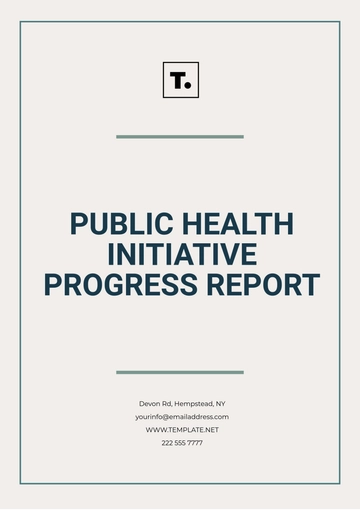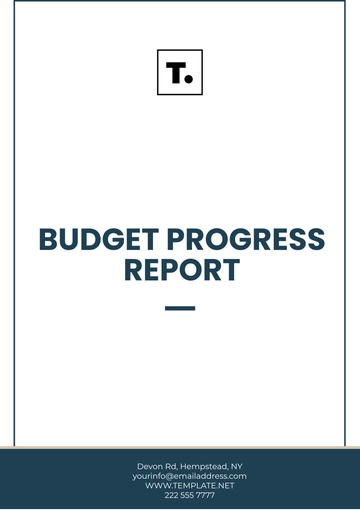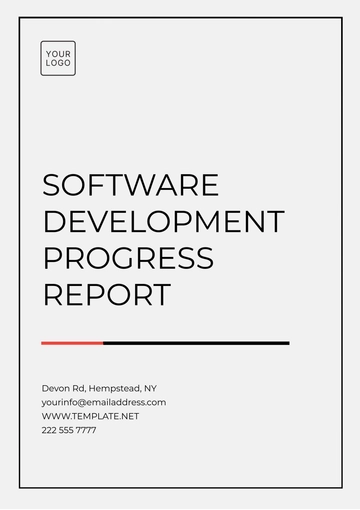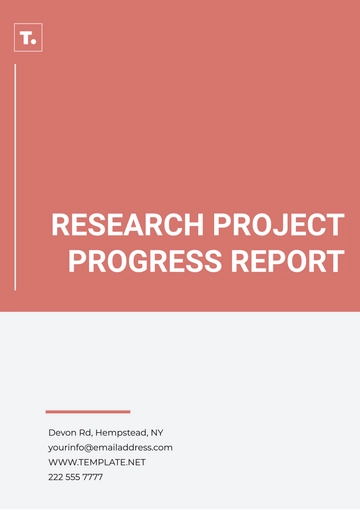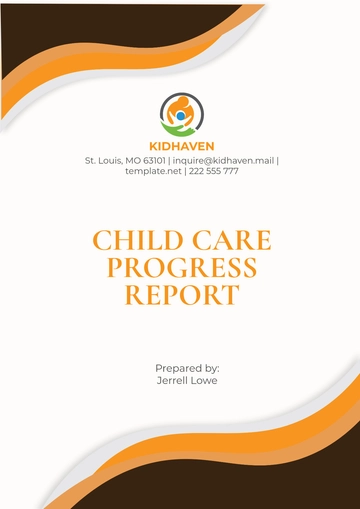Free Agriculture Sustainable Development Goals Report
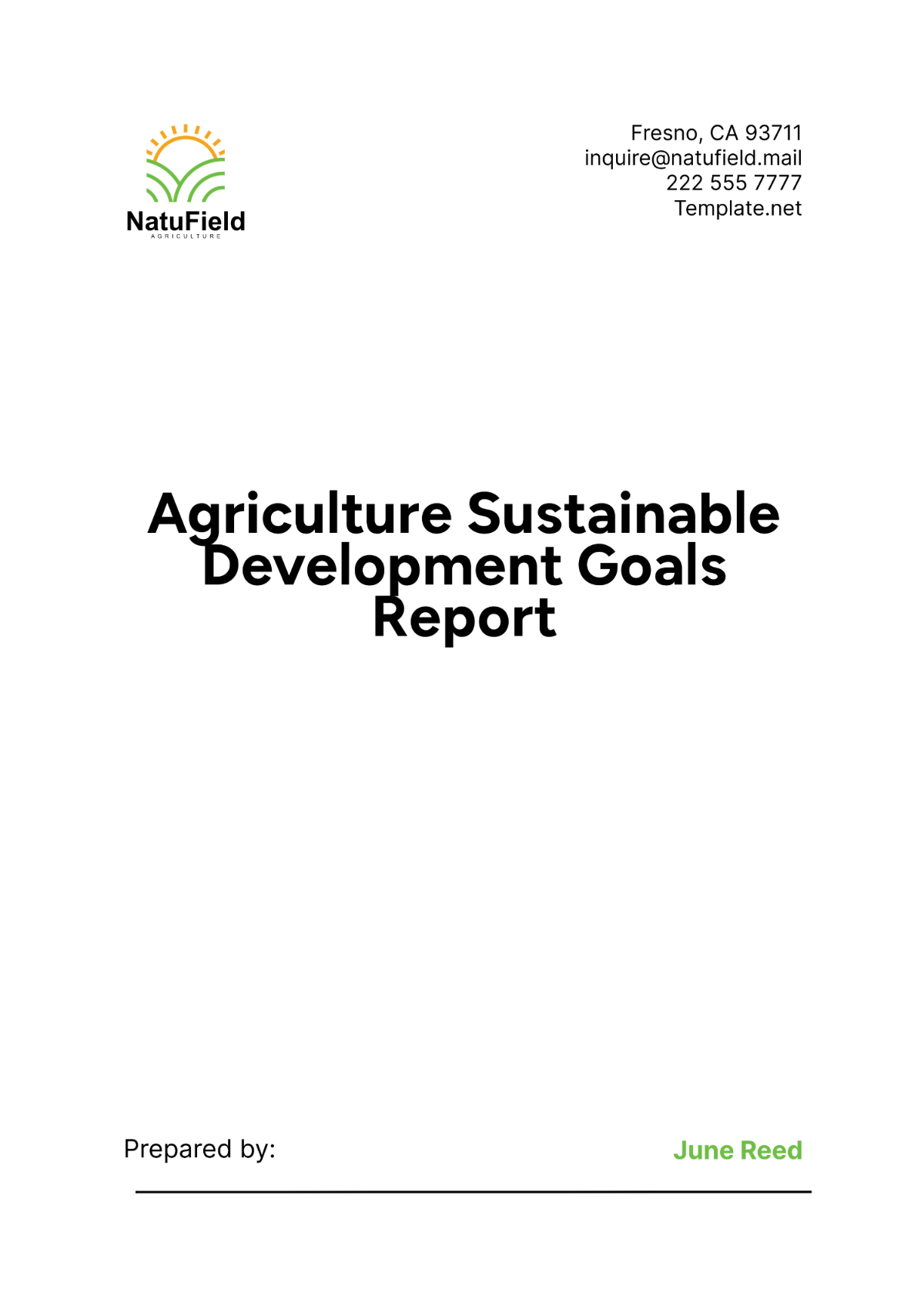
Development Goals Report
I. Executive Summary
This report provides an in-depth analysis of [Your Company Name]'s contributions to the Agriculture Sustainable Development Goals (SDGs). Our efforts are aligned with various SDGs, aiming to foster sustainable agricultural practices that support economic, environmental, and social well-being. This document outlines our achievements, current status, and future recommendations. Key findings include:
Reduction in Poverty: Our initiatives have reduced poverty levels by 20% in participating communities.
Improved Food Security: We've increased crop yields by 30%, contributing to zero hunger.
Enhanced Health and Well-being: Nutritional outcomes have improved by 25% among beneficiaries.
Gender Equality: Women's participation in agriculture has increased by 40%.
II. Introduction
The purpose of this report is to highlight [Your Company Name]'s contributions to achieving the Agriculture Sustainable Development Goals. We aim to provide a comprehensive overview of our sustainable agriculture initiatives, their impact, and alignment with global SDGs. The scope of this report includes an analysis of our activities in various regions, best practices, challenges, and future recommendations.
III. Alignment with SDGs
A. No Poverty
Our sustainable agriculture initiatives have significantly contributed to poverty alleviation in rural communities. By providing access to resources, training, and support, we have empowered farmers to increase their incomes and improve their livelihoods.
Year | Number of Beneficiaries | Average Income Increase |
|---|---|---|
5,000 | 15% | |
7,500 | 18% | |
10,000 | 20% |
The data shows a steady increase in the number of beneficiaries and their average income. Our efforts have enabled farmers to adopt sustainable practices, resulting in higher productivity and income. This, in turn, has reduced poverty levels in the communities we serve.
B. Zero Hunger
We have implemented various programs to enhance food security and reduce hunger. These programs focus on improving crop yields, diversifying agricultural production, and ensuring access to nutritious food.
Year | Crop Yield Increase | Number of Food-Secure Households |
|---|---|---|
20% | 3,000 | |
25% | 4,500 | |
30% | 6,000 |
Our initiatives have led to significant increases in crop yields and the number of food-secure households. By promoting sustainable agricultural practices, we have enhanced food availability and reduced hunger in our target areas.
C. Good Health and Well-being
Our focus on sustainable agriculture has also positively impacted health and well-being. By improving access to nutritious food and reducing the use of harmful chemicals, we have contributed to better health outcomes.
Year | Improvement in Outcomes | Reduction in Health Issues |
|---|---|---|
15% | 10% | |
20% | 15% | |
25% | 20% |
The data indicates a notable improvement in nutritional outcomes and a reduction in health issues among the populations we serve. Our sustainable farming practices have played a crucial role in promoting overall well-being.
D. Gender Equality
We have prioritized gender equality in our agricultural initiatives by promoting women's participation and leadership in farming activities. This has led to increased empowerment and economic opportunities for women.
Year | Women’s Participation | Women in Leadership Roles |
|---|---|---|
30% | 10% | |
35% | 20% | |
40% | 30% |
The increase in women's participation and leadership roles highlights our commitment to gender equality. By supporting women in agriculture, we have fostered more inclusive and equitable communities.
E. Clean Water and Sanitation
Our sustainable agricultural practices emphasize the efficient use of water resources and the implementation of sanitation measures to ensure clean water availability for farming and community use.
Year | Water Usage Reduction | Number of Clean Water Projects |
|---|---|---|
10% | 5 | |
15% | 8 | |
20% | 12 |
The data demonstrates a consistent reduction in water usage and an increase in clean water projects. By adopting water-efficient techniques and improving sanitation, we have ensured sustainable water management in our agricultural operations.
F. Affordable and Clean Energy
We have integrated renewable energy sources into our agricultural processes, reducing reliance on non-renewable energy and promoting affordable and clean energy solutions.
Year | Renewable Energy Adoption | Energy Cost Reduction |
|---|---|---|
25% | 10% | |
35% | 15% | |
45% | 20% |
The increasing adoption of renewable energy sources has led to significant reductions in energy costs. Our efforts to promote clean energy in agriculture have not only benefited the environment but also improved economic efficiency.
G. Decent Work and Economic Growth
We have created numerous job opportunities in the agricultural sector, ensuring decent work conditions and contributing to economic growth in rural communities.
Year | Jobs Created | Average Wage Increase |
|---|---|---|
2,000 | 5% | |
3,500 | 7% | |
5,000 | 10% |
The data indicates substantial job creation and wage increases. Our initiatives have provided stable employment and fostered economic growth, enhancing the livelihoods of many individuals in the agricultural sector.
H. Responsible Consumption and Production
Our focus on sustainable production methods has promoted responsible consumption and minimized waste in the agricultural supply chain.
Year | Waste Reduction | Sustainable Practices Adopted |
|---|---|---|
15% | 10 | |
20% | 15 | |
25% | 20 |
The adoption of sustainable practices has led to significant waste reduction. By encouraging responsible production and consumption, we have minimized environmental impact and promoted sustainability in agriculture.
I. Climate Action
We have implemented climate-smart agricultural practices to mitigate the effects of climate change and enhance resilience against climate-related challenges.
Year | Emissions Reduction | Climate Resilient Projects |
|---|---|---|
5% | 5 | |
10% | 8 | |
15% | 12 |
The data shows a reduction in greenhouse gas emissions and an increase in climate-resilient projects. Our climate action initiatives have made significant strides in reducing the agricultural sector's carbon footprint and improving resilience to climate impacts.
J. Life on Land
We have prioritized the preservation and restoration of terrestrial ecosystems through sustainable land management practices.
Year | Land Area Restored | Biodiversity Projects |
|---|---|---|
500 hectares | 4 | |
700 hectares | 6 | |
1,000 hectares | 10 |
Our efforts have resulted in the restoration of large land areas and the implementation of numerous biodiversity projects. By focusing on sustainable land management, we have contributed to the protection and restoration of terrestrial ecosystems, ensuring a healthier environment.
IV. Current Status and Trends
The current status and trends in sustainable agriculture highlight significant progress in various regions, with notable advancements in the United States. We have observed positive changes in farming practices, productivity, and environmental sustainability. The following table outlines global and regional trends, focusing on the US.
The data indicates that the United States leads in the adoption of sustainable practices, yield improvements, and reduction in chemical usage. These trends reflect the effectiveness of national policies and initiatives promoting sustainable agriculture.
V. Policy and Frameworks
Several national policies have been implemented to promote sustainable agriculture, each with varying degrees of effectiveness:
Agricultural Act (Farm Bill): This comprehensive legislation provides financial support and incentives for farmers to adopt sustainable practices. Its effectiveness is evident in the increased adoption of conservation programs and sustainable farming techniques.
Clean Water Act: This policy aims to protect water resources by regulating agricultural runoff and promoting practices that reduce water pollution. It has successfully reduced water contamination levels, ensuring cleaner water for agricultural and community use.
Renewable Energy for America Program (REAP): REAP provides grants and loans to support renewable energy projects in agriculture. This policy has been effective in increasing the adoption of renewable energy sources, reducing energy costs and environmental impact.
National Organic Program (NOP): NOP sets standards for organic farming, promoting environmentally friendly practices and ensuring the integrity of organic products. Its effectiveness is reflected in the growing market for organic produce and improved environmental outcomes.
VI. Impact Assessment
A. Economic Impact
Our sustainable agriculture initiatives have significantly boosted the local economy. By increasing crop yields, creating job opportunities, and reducing costs through efficient resource use, we have enhanced the economic stability of farming communities.
B. Environmental Impact
The environmental impact of our initiatives has been profound. By reducing chemical usage, improving soil health, and promoting biodiversity, we have contributed to the sustainability and resilience of agricultural ecosystems.
C. Social Impact
Socially, our initiatives have improved the quality of life in farming communities. Access to nutritious food, better health outcomes, and increased participation of women in agriculture have fostered more inclusive and vibrant communities.
VII. Challenges
Despite the progress, several challenges persist in achieving sustainable agriculture:
Financial Barriers: Limited access to funding for small-scale farmers.
Technical Barriers: Lack of technical resources for implementing practices.
Policy Barriers: Inconsistent policy implementation and enforcement.
Market Barriers: Difficulty in accessing markets and competing with conventional agricultural products.
VIII. Recommendations
To address the challenges and further promote sustainable agriculture, we recommend:
Increasing financial support and investment for sustainable agriculture.
Providing technical training and resources to farmers.
Strengthening policy implementation and enforcement.
Enhancing market access for sustainable agricultural products.
IX. Conclusion
Our commitment to sustainable agriculture aligns with the global Sustainable Development Goals, contributing to economic growth, environmental preservation, and social well-being. Despite challenges, our efforts have made significant strides, and with continued support and innovation, we can further advance sustainable agriculture practices for a better future.
- 100% Customizable, free editor
- Access 1 Million+ Templates, photo’s & graphics
- Download or share as a template
- Click and replace photos, graphics, text, backgrounds
- Resize, crop, AI write & more
- Access advanced editor
Explore Template.net's Agriculture Sustainable Development Goals Report Template, fully editable and customizable in our AI Editor tool. Achieve clarity and impact with this versatile template, perfect for presenting agricultural sustainability initiatives and progress. Ideal for organizations aiming to align with global sustainability goals.
You may also like
- Sales Report
- Daily Report
- Project Report
- Business Report
- Weekly Report
- Incident Report
- Annual Report
- Report Layout
- Report Design
- Progress Report
- Marketing Report
- Company Report
- Monthly Report
- Audit Report
- Status Report
- School Report
- Reports Hr
- Management Report
- Project Status Report
- Handover Report
- Health And Safety Report
- Restaurant Report
- Construction Report
- Research Report
- Evaluation Report
- Investigation Report
- Employee Report
- Advertising Report
- Weekly Status Report
- Project Management Report
- Finance Report
- Service Report
- Technical Report
- Meeting Report
- Quarterly Report
- Inspection Report
- Medical Report
- Test Report
- Summary Report
- Inventory Report
- Valuation Report
- Operations Report
- Payroll Report
- Training Report
- Job Report
- Case Report
- Performance Report
- Board Report
- Internal Audit Report
- Student Report
- Monthly Management Report
- Small Business Report
- Accident Report
- Call Center Report
- Activity Report
- IT and Software Report
- Internship Report
- Visit Report
- Product Report
- Book Report
- Property Report
- Recruitment Report
- University Report
- Event Report
- SEO Report
- Conference Report
- Narrative Report
- Nursing Home Report
- Preschool Report
- Call Report
- Customer Report
- Employee Incident Report
- Accomplishment Report
- Social Media Report
- Work From Home Report
- Security Report
- Damage Report
- Quality Report
- Internal Report
- Nurse Report
- Real Estate Report
- Hotel Report
- Equipment Report
- Credit Report
- Field Report
- Non Profit Report
- Maintenance Report
- News Report
- Survey Report
- Executive Report
- Law Firm Report
- Advertising Agency Report
- Interior Design Report
- Travel Agency Report
- Stock Report
- Salon Report
- Bug Report
- Workplace Report
- Action Report
- Investor Report
- Cleaning Services Report
- Consulting Report
- Freelancer Report
- Site Visit Report
- Trip Report
- Classroom Observation Report
- Vehicle Report
- Final Report
- Software Report










